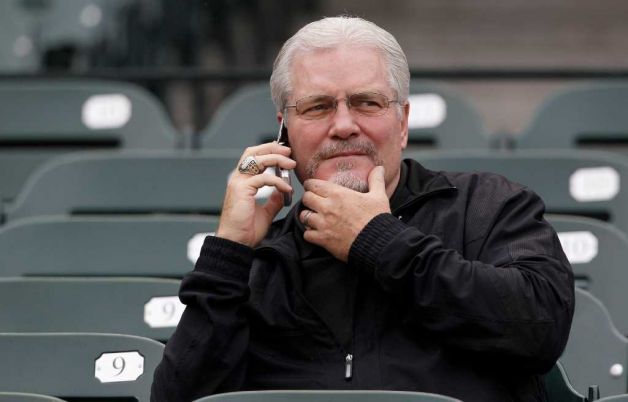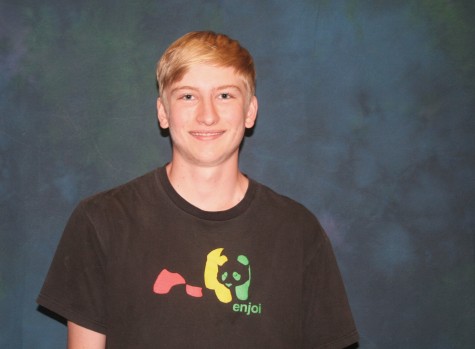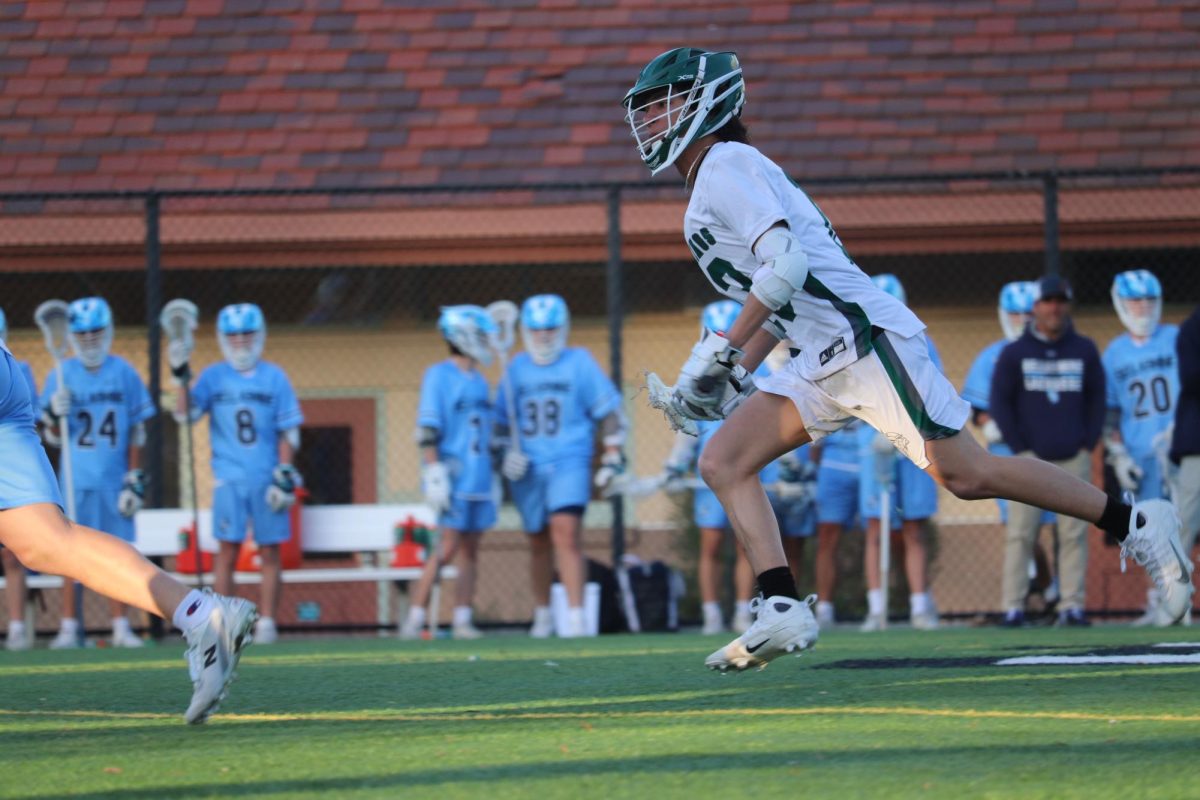The architect of a dynasty
How Brian Sabean and co. built the Giants into the greatest team in recent history
Brian Sabean has built the Giants into a powerhouse as the General Manager.
December 3, 2014
The San Francisco Giants have officially left their mark in baseball history. They have brought home three of the past five world series trophies, something no National League team has done in nearly 70 years. How did the Giants franchise emerge to become the best team of this decade? How can they continue their success? The answers are ones that every Major League Baseball team strives to achieve .
Come October and November, The San Francisco Giants have grown quite accustomed to champagne celebrations, championship rings and coveted trophies. They have never been regarded as the frontrunner, yet every year they seem to pull off miracles.
Why are they a dynasty?
Many argue that the Giants should not be considered a dynasty because that classification requires success each and every season. It is true that the Giants have missed the playoffs twice between their championship campaigns. However, it is important to consider this: over the past five seasons, the Giants have won more championships than every other team combined. The Cardinals and Red Sox each earned a championship, but there are 27 other teams that haven’t won any. The Giants have three trophies in their trophy case, and that is all that matters. Perhaps they are not as dominant as the Yankees in the 1930’s, 50’s, and 90’s, but they are easily the best team of this decade, and they don’t seem to be going anywhere anytime soon.
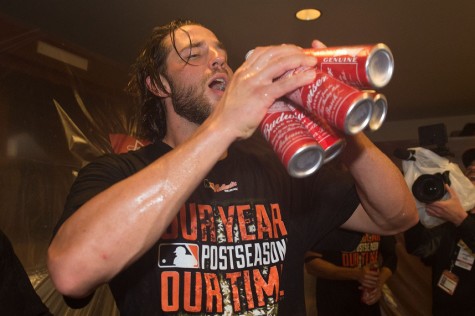
Who is responsible?
While the games are played by the players, the management of the team deserves the most credit for building the franchise. The Giants had fallen into the category of mediocre teams following a World Series loss in 2002 and defeat in the NLDS in 2003 after a 100-win season. They put together four consecutive losing seasons, watching other teams celebrate at the end while they sat on the couch.
While the team failed to perform on the field, the front office was tasked with putting together the pieces to bring the franchise back to the Fall Classic. That’s where General Manager (GM) Brian Sabean comes in. While he has not garnered much respect as one of the top GMs in baseball, he has made a strong case for himself in the past five years. He built this dynasty in three different ways, quality drafting, small free agent signings and smart trades. Possibly the most important move he made was hiring former catcher and established coach Bruce Bochy to manage the team in 2007.
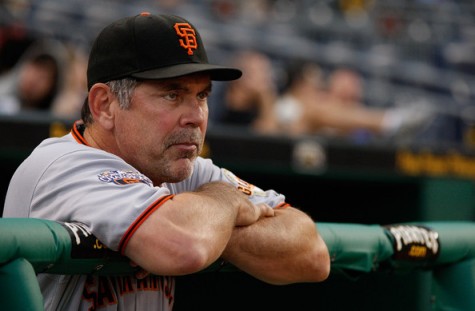
Since taking the reigns of the club, Bochy has served as the teams true leader. He is truly the spiritual leader of the team, and he brings out the best in all of his players. He has consistently made game winning decisions and is in the running for manager of the year nearly every year. He has also guided his team through extreme adversity, like when the team won six straight elimination games in 2012 or when they won the 2014 World Series without catalyst Angel Pagan or workhorse Matt Cain. Each World Series team had missed out on the playoffs the previous year, yet Bochy not only remained confident himself, but he implanted the same confidence in all of his players. That is why the players always give credit to Bochy, and he has been every bit as important to the franchise as Sabean. Even when the Giants aren’t winning championships, their guidance never comes into question.
How did he do it?
For any team other than the Yankees or Dodgers, the most important way to build a team is through the draft. The rise of this franchise took root in the 2002 draft. The Giants selected Matt Cain with their first pick, planning for him to eventually become the ace of the starting rotation. While he wouldn’t become the teams ace for 10 years, he posted impressive numbers his first few seasons. He would serve as one of the best number two starters in baseball after his breakout season in 2009 and continued his strong pitching for the next three seasons. The only reason he wasn’t able to take the lead role was the emergence of 2006 first round pick, Tim Lincecum. His rise to stardom was a little more rapid, as he won the Cy Young Award in just his second year (2008) and made a case for himself as the best pitcher in baseball with another Cy Young in 2009. Thus, through the draft, the Giants established the front end of their rotation, one that became arguably the best in the league. A year later, the Giants picked a big southpaw from North Carolina named Madison Bumgarner. He was also their first selection and his expectations were just as high as Cain’s and Licecum’s.
Sabean didn’t pick out obvious pitching prospects in the early rounds, instead, he found the hidden talents. In 2004 the Giants drafted Jonathan Sanchez in the 27th round, who would solidify the starting rotation that would become the core of the team. Sabean also established the bullpen by drafting Brian Wilson in 2003 in the 24th round and Sergio Romo in the 28th round of the 2005 draft. The two served as the closer and the set-up man, making quite an intimidating pair for teams trailing the Giants going into the final innings. All of the previously mentioned pitchers contributed in all three world series runs except for Sanchez who was gone after 2011 and Wilson who signed with the Dodgers after 2012. These pitchers have been the foundation of the team, the steady force that led the Giants in each world series campaign.
Sabean knows that you can’t win championship with pitching alone, so he shifted his focus on offense and defense. The Giants had not drafted any position players worth mentioning since Nate Schierholtz in round 2 of 2002, however he was much more prominent in the field than at the plate. In 2008 Sabean drafted then-shortstop Buster Posey with his first pick and Brandon Crawford, another shortstop, with his fourth pick. In the following draft the Giants picked up slugging first baseman Brandon Belt in the fifth round. In the past few years the Giants drafted players who are just now emerging onto the big stage. These youngsters include Joe Panik, Andrew Susac and Matt Duffy. The youth in the field gives the organization hope for great longevity from this mix of great defenders and solid hitters.
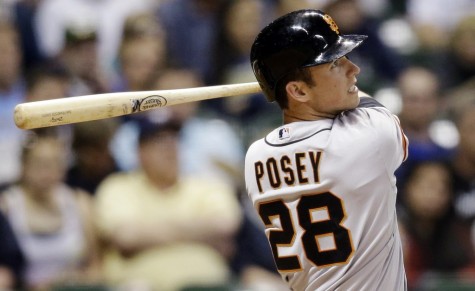
The draft isn’t the only way for a team to improve. Sometimes a team’s most impactful players are signed as free agents or acquired via trade. While these methods are important to utilize, they also carry the most risk. For examples of these risks, look no further than free agent signee Barry Zito who never lived up to a seven year, $126 million contract. Then there’s the trade which brought over the much hated A.J. Pierzynski for a single season in exchange for young pitching prospect Joe Nathan, who became the best closer of the century besides Mariano Rivera. After these two huge misses, Sabean has learned to stay conservative in his roster moves, and he has been infallible ever since.
Around this promising mix of franchise pieces, Sabean was in charge of assembling a supporting cast year in and year out. Sabean did this by acquiring low profile free agents and making smart mid-season trades to fill out the roster. The roots of the recent World Series squads go back to 2002, when the Giants signed 16-year old Venezuelan standout Pablo Sandoval. He has been one of the most productive players on the team and one of the top third basemen in the league, and has also been the Giants top World Series performer. Starting in 2009 Sabean made a series of moves that would have immediate positive results. In 2009 the G-men won 88 games, their first winning season in four years and an eighteen game improvement from the prior season. The moves that slingshotted the Giants into division contention were low key free agent signings and was aided by the emergence of some young talent. In the offseason leading up to the season Sabean signed a few dependable veterans to hold down essential roles. Edgar Renteria replaced perennial Gold Glove winner Omar Vizquel and occupied the shortstop position for two years, and Juan Uribe was used all over the infield as a utility man. They also signed a solid left-handed reliever in Jeremy Affeldt to lock down the end of the bullpen along with Wilson and Romo. In 2009 Affeldt had an Earned Run Average (ERA) of 1.73 while Juan Uribe batted .289 with 16 home runs, good enough for the second and third best totals on the team. Renteria had a slight down year, yet that didn’t hurt the team enough to slow down the emergence of Sandoval and Lincecum’s second Cy Young in a row. The Giants fortunes seemed to be improving, and their youth set the team up for the future.
2010
In an effort to build on the team’s recent success, the Giants signed free agents Aubrey Huff and Santiago Casilla. Huff delivered some power and some splash hits to spark the offense, and Casilla began the strong emphasis that the Giants would eventually put on bullpen pitching during the season. The Giants played well enough during first five months of the season to give them a decent chance at overcoming the San Diego Padres to win the NL West. Brian Sabean traded for four players that would hopefully propel the team down the final stretch. Lefty specialist Javier Lopez and fireballer Ramon Ramirez would transform an already good Giants bullpen into possibly the best in the Majors. Eccentric closer Brian Wilson inspired the slogan “fear the beard”, while Affeldt, Lopez, Ramirez and Casilla provided immense depth. Veteran outfielders Cody Ross and Pat Burrell were traded for prior to the deadline as well, and they would play key roles during the closing month of the season. These low profile role players helped a decent team to become good. These additions coupled with the emergence of Buster Posey sparked the stagnant Giants offense. Their small-ball offense put enough runs to come up with one or two run leads behind one of the top starting rotations in the league and shut down bullpen. Their trend of close wins and exciting conclusions earned Giants baseball the nickname “torture”. The pitching staff collectively put up the leagues best ERA and the defense sported the fourth highest fielding percentage behind them. Because of these two strengths, the Giants made the playoffs by beating the San Diego Padres on the final day of the regular season to secure the NL West.
This band of misfits was not expected to keep up with playoff caliber teams, but their pitching demanded respect. They took down the Wild Card Atlanta Braves in four games thanks to some costly errors on the Braves part.
The Championship series posed a much greater threat to the Giants dreams. The Philadelphia Phillies easily handled the Cincinnati Reds. Following a Cy Young season and an NLDS no-hitter, Roy “Doc” Halladay was poised to shut down the Giants average and inconsistent offense, until Cody “The Boss” Ross tagged him for two dingers in a Giants’ 4-3 game one victory. Ross would hit another in a losing effort during game two. In game three Matt Cain tossed 7 shutout innings, and the Giants won 3-0. In Game 6, Brian Wilson struck out Phillies star Ryan Howard with the winning run on base to clinch the series. Mid-season acquisition Cody Ross was named the NLCS MVP.
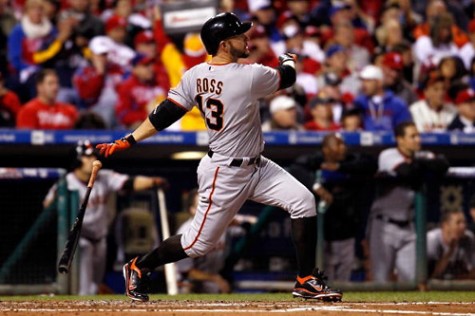
The Giants made it to the Fall Classic seeking their first World Series championship since 1954, and their first since moving to San Francisco. They faced a great Texas Rangers team with a potent offense and boasted one of the best starting rotations in the American League, beginning with Cy Young contender Cliff Lee followed by C.J. Wilson. The series itself was not incredibly competitive, as San Francisco was popping champagne bottles after only five games. Tim Lincecum won games one and five, Matt Cain tossed nearly eight scoreless innings in game two, and rookie Madison Bumgarner threw eight innings of shutout ball in game four. 2009 acquisition Edgar Renteria was named World Series MVP after hitting the go-ahead home run in the decisive game.
The 2010 season gave the Giants organization a lot to look forward to. The starting rotation was dominant, every pitcher was set to return in 2011 and Madison Bumgarner showed flashes of brilliance as a rookie. Fellow rookie Buster Posey was named Rookie of the Year, and there were reinforcements on their way.
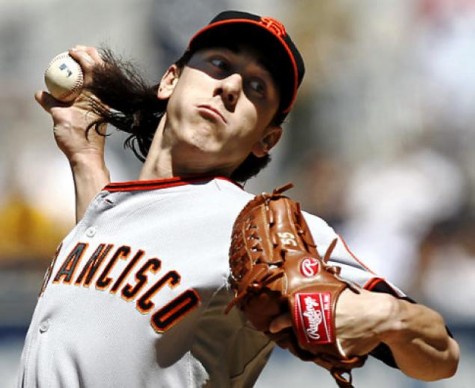
2011
The new season began with some new faces. Rookies Brandon Crawford and Brandon Belt took over as the starting shortstop and first baseman. Journeyman Ryan Vogelsong was signed from Japan and given a chance to play for the team that had originally drafted him. However, the season would be tainted by injuries to Buster Posey and Freddy Sanchez early in the year, and the Giants never contended for the playoffs.
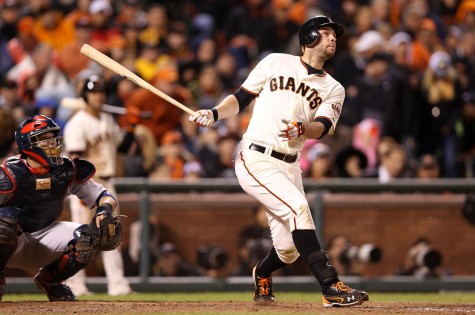
2012
How did the Giants respond to missing the playoffs after winning their first World Series in San Francisco? They shook off the adversity, signed some players, and most of all stayed pretty healthy. In free agency they added a couple of outfielders who didn’t draw a lot of attention with Melky Cabrera and Gregor Blanco, who would both turn in career years. Gregor Blanco played in more games than he had in the previous three seasons combined, while Melky Cabrera led the league in batting average and hits before receiving a season ending suspension for using a banned substance. The most important move was trading for outfielder Angel Pagan for the price of just Andres Torres, and he would spark the Giants offense and starred in the field along with the “Melk man”. Pagan has remained a driving force for the club ever since.
The Orange and Black battled with the Dodgers throughout the season, each having a shot at the division crown at some point. When Cabrera was lost, the Giants needed a boost. Sabean made another savvy trade, acquiring the quirky Hunter Pence one day before the suspension was announced. Pence did not actually play great for the Giants during the regular season, but has since become one of the team’s top producers as an every-day fixture. What’s more valuable is his heart and the motivation he gives the team. Sabean also traded for veteran second baseman Marco Scutaro mid way through the year, and he went on to bat .362 and serve as the second half of a great one-two punch at the top of the lineup following Pagan. The emergence of young talent as well as a strong starting rotation carried the team all year.
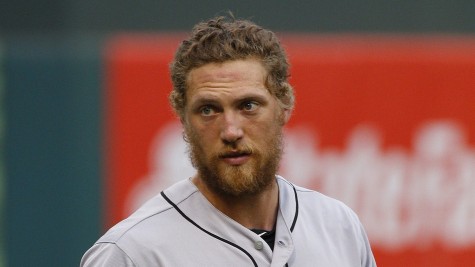
The Giants eventually outlasted the Dodger for the NL West title, and finished the season with 94 wins. Unfortunately, the Giants season looked over after just two games in the Division Series against the Reds. They fell in the first two games of a best of five series, and needed to win the next three games to advance. That is when the heart of the Giants emerged, lead by Pence and Bochy, and the club rallied to win the next three games, all in Cincinatti.
In the NLCS the Giants faced another great club in the St. Louis Cardinals, and they again found themselves in a position where they needed to win three games to steal the series. Again, they prevailed and won the series, with a clutch performance by Barry Zito who redeemed himself after years of mediocrity with a game six victory. This is where to have to give credit to Sabean and Bochy. Of course the players won the games, but the job done by Sabean and Bochy in establishing a team of fighters and a tight-knit locker room that willed the team to victory.
The Giants carried their momentum to the World Series, sweeping the heavily favored Detroit Tigers. Pablo Sandoval was named MVP for his three home run performance off of AL MVP and Tigers ace Justin Verlander, who at the time was the undisputed greatest pitcher on the planet. Tim Lincecum, who had the worst season of his career, pitched with dominance out of the bullpen, thanks to opportunities given to him by Bochy.
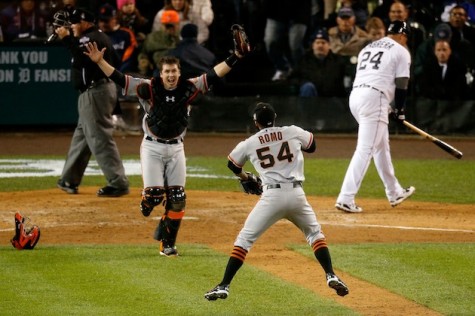
Again, Sabean’s draft picks and genius trades partnered with the team attitude influenced by Bochy brought this team to the ultimate goal in baseball. The team was truly a family, and there was a ton of trust to go around. The lowly Giants had won two world series in three seasons, and dynasty talks started up.
2013
The Giants followed up their 2012 World Series win by doing what they did in 2011: missing the playoffs. What is notable about this season is what was missing. Sabean didn’t make any free agent signings or execute any trades, and the Giants fielded a nearly identical team that they had the year before. The season did however serve a purpose. Brandon Crawford’s glove finally lived up to his potential and Brandon Belt emerged as one of the best first basemen in the league. Buster Posey was able to gain more valuable experience, and Mad Bum turned in the best season of his young career.
2014
Sabean and Bochy needed to bring back some of the magic they had witnessed the two previous odd-numbered years. They needed to bounce back from a miserable 2013 season, but Sabean again took a small ball approach to solving the teams problems. He signed veteran big-man Mike Morse to a cheap one-year deal. Morse provided some pop, however he hadn’t put up big power numbers since 2011. He added another veteran in 38 year-old Tim Hudson, who was coming off a season shortened due to a gruesome broken ankle.
The Giants somehow got off to a ridiculously hot start. Carried by starting pitching and unprecedented power, they began the season with 43 wins and 21 losses. They were a clear choice as the best team in baseball, only rivaled by the team across the Bay. The Giants stumbled during June however. Actually they did more than stumble. They fell, and didn’t get back up. They consistently chipped away at their great start, at one point finding themselves at just six game over .500, and several games behind the Dodgers. Their offense was bad at best, often putting up less than three runs, and they suffered an extreme power outage contrasted to what they had seen early in the year. To go with the rest of the poor pitching, closer Sergio Romo proved to be ineffective and was replaced by Santiago Casilla. Even their normally solid defense was making costly errors on a daily basis. The Giants were suffering in every aspect of the game.
To make matters worse, the Giants lost Matt Cain to elbow surgery, hurting a struggling starting rotation even more. The Giants also had to shut down Angel Pagan after an injury plagued season. Belt and Morse were also lost for extended periods of time.
The Giants were saved by a few unlikely heroes. Sabean sacrificed two pitching prospects in a trade for Jake Peavy, who had originally come up under Bochy on the Padres, but had turned in a 1-9 season to that point. The moved worked to perfection though, and Peavy was the Giants best pitcher down the stretch. To fill a in the lineup at second base, Joe Panik was called up to the majors and made an immediate impact, hitting second and fielding his position outstandingly for a rookie. Another savior for the club was platoon left fielder Gregor Blanco, who occupied center field in Pagan’s absence, hitting lead off. Another rookie, catcher Andrew Susac was called up to play catcher while Posey filled in for Belt at first base.
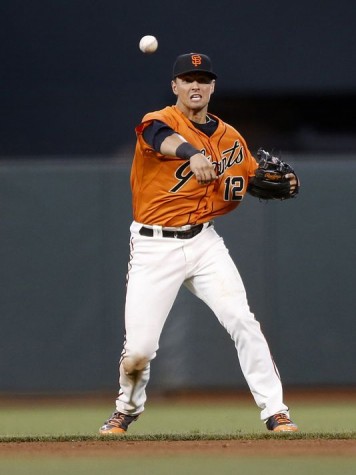
The way these no name players performed inspired the rest of the team to rally and reach the playoffs as the second wild card team. The way this team closed out the final stretch highlights how well Sabean has designed the team and Bochy’s locker room presence.
Being the second wild card team meant the Giants had to travel to Pittsburgh to take on the Pirates in a one-game series. That’s not much of a problem when you have a pitcher like Madison Bumgarner on the bump, especially after Brandon Crawford launched a grand slam in the fourth inning. Bumgarner went the distance, pitching a complete game shutout, in a preview for things to come for the postseason.
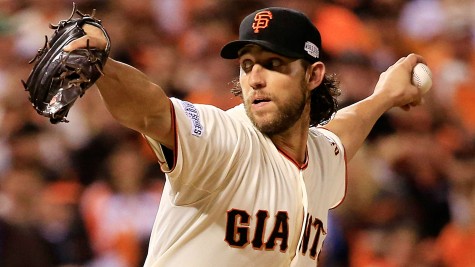
In the NLDS the Giants matched up against the Washington Nationals, the team that held the NL’s best record. Obviously the Giants were once again huge underdogs, but Peavy set the tone in game one with a giant victory. In the next game the Giants scored their first run of the game off Nats star Jordan Zimmermann when they were down to their last strike on a double by Pablo Sandoval. The game would go 18 innings, with Yusmeiro Petit extending the game with 6 scoreless innings and Brandon Belt effectively ending it with a solo shot. The Giants closed out the series in game four to move on to the NLCS.
The Cardinals crushed NL MVP and Cy Young winner Clayton Kershaw of the Dodgers twice en route to winning their series, setting up another Giants-Cardinals NLCS. The series was a battle, with plenty of drama throughout, setting up a potential series clinching game six for the Giants. After trailing for much of the game, Mike Morse hit the first pinch-hit home run in Giants postseason history to tie it up, and journeyman Travis Ishikawa blasted a walk-off homer in the ninth to send the Giants to the World Series once again.
This is where things got really interesting. The Giants, who obviously knew how to win when it counts, met the Kansas City Royals, who had not lost a single game in their miraculous postseason that came after over two decades of losing. The series was back and forth, with each team earning dominant wins along the way, and it came down to a pivotal game seven, winner take all. Bochy had made it known that Bumgarner, who had already won two games in the series including a shutout, was available out of the bullpen for game seven. Bumgarner entered in just the fifth inning with a one run lead (thanks to another clutch hit courtesy of Mike Morse) and was lights-out. He pitched the rest of the way to earn the save on just two days rest, and entrenched his performance in World Series lore, arguably the greatest of all time.
When the Giants claimed their latest World Series title they cemented their place in history. The second Pablo Sandoval caught the pop-up that ended the Royals’ season the Giants became a bona fide dynasty, for reason I already mentioned.
Looking Forward
The Giants face perhaps their most daunting off season in recent memory. They are challenged with dealing several key free agents to be. These players destined to hit the open market, where the Giants can’t compete with other big money teams, include Mike Morse, Jake Peavy, Ryan Vogelsong, and Sergio Romo. They have already lost Pablo Sandoval as was expected due to his price tag, so they must find an answer at third. The Giants will likely pursue a third baseman, a starting pitcher or two, and should seriously consider signing a top tier outfielder.
It’s not all bad for the Giants though, as they have more youngsters coming to the rescue. There’s the likes of Panik and Susac (who could be used as a trading piece), and there’s even more on their way. These enticing prospects include pitchers Tyler Beede, Kyle Crick and Adalberto Mejia. They are all expected to hit the big show in the next couple of years, while infielder Christian Arroyo and outfielder Mac Williamson could be donning San Francisco uniforms as soon as 2016.
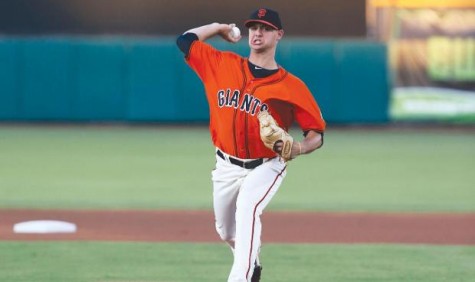
Luckily for the Giants, Sabean has stocked up the Giants with ample starting pitching talent in the minor leagues, but that alone won’t bring the Giants back to the top. They’ll need Sabean to pull off a couple more strokes of genius, and perhaps an uncharacteristic big time free agent in order to win another World Series in the near future. If anyone can lead this team back to the top, it’s Sabean and Bochy.



